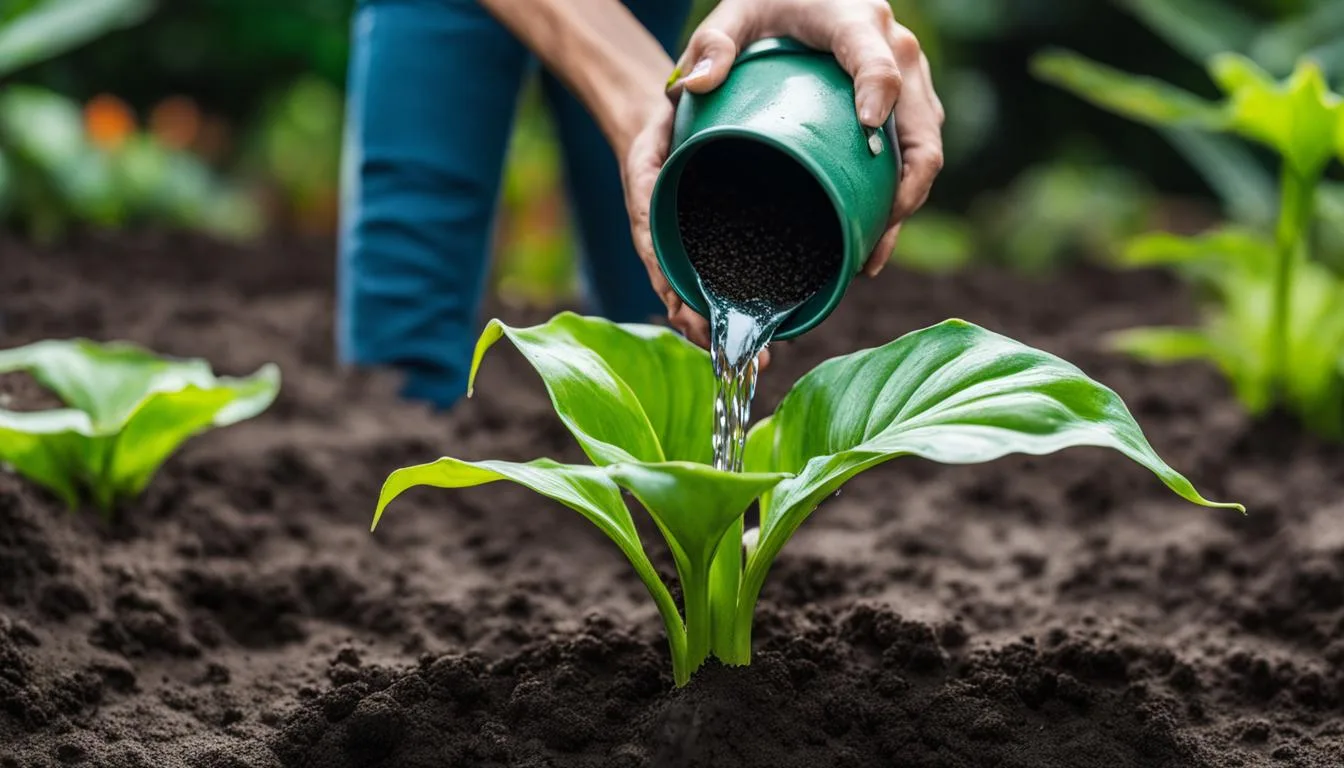
Welcome to my comprehensive guide on Alocasia Polly care and maintenance! If you’re a plant enthusiast looking to add a touch of tropical beauty to your indoor garden, the Alocasia Polly is the perfect choice. With its striking foliage and unique appearance, this plant is sure to become a captivating centerpiece in your home.
In this guide, I will provide you with valuable insights and detailed instructions to ensure that your Alocasia Polly thrives and remains healthy. From understanding its light and watering requirements to finding the right temperature and fertilizer schedule, I will cover all aspects of caring for your Alocasia Polly.
So let’s dive in and discover the secrets to keeping your Alocasia Polly happy and thriving!
Key Takeaways:
- Provide medium to bright, indirect sunlight for your Alocasia Polly.
- Water your plant weekly, keeping the soil moist but not wet.
- Create humidity by misting the plant or using a pebble tray.
- Maintain a temperature range of 18-25ºC (65-80ºF) for optimal growth.
- Fertilize monthly during the growing season and reduce frequency in winter.
Light Requirements for Alocasia Polly
Proper lighting is crucial for the healthy growth of your Alocasia Polly. This stunning tropical houseplant thrives in medium to bright, indirect sunlight. It is important to note that Alocasia Polly is not suited to low light or direct sunlight, as it can scorch their leaves. So, finding the right balance is key.
Place your Alocasia Polly near a window with filtered sunlight, where it can receive several hours of gentle morning or afternoon sun. This will provide the plant with the optimal amount of light it needs to thrive. If you notice the plant leaning towards the light, be sure to rotate it regularly to ensure even growth.
Alocasia Polly Light Requirements
| Lighting Level | Details |
|---|---|
| Medium to Bright, Indirect Sunlight | Place near a window with filtered sunlight. Several hours of gentle morning or afternoon sun are ideal. |
| Avoid Low Light | Alocasia Polly is not suited to low light conditions as it can cause poor growth and leaf damage. |
| Avoid Direct Sunlight | Direct sunlight can scorch the leaves of Alocasia Polly, so it’s important to protect it from intense sun exposure. |
By providing your Alocasia Polly with the appropriate amount of light, you can ensure its vibrant foliage and overall well-being. Remember to observe the plant’s response to its current lighting conditions and make any necessary adjustments to maintain its healthy growth.
Alocasia Polly Watering Guide: Keep Your Plant Hydrated and Thriving
Proper watering is essential for maintaining the health and vitality of your Alocasia Polly. By following this comprehensive watering guide, you can ensure that your plant receives the right amount of moisture without the risk of overwatering or underwatering.
During the growing season, which typically spans from spring to summer, it is recommended to water your Alocasia Polly once a week. Before watering, always check the top inch of soil for dryness.
If it feels slightly dry, it’s time to give your plant a good drink. Apply water until it flows out of the drainage holes, ensuring thorough saturation. However, avoid letting your plant sit in standing water, as this can cause root rot.
In the dormant season, which typically occurs in winter, it’s important to adjust your watering routine. Allow the top 2 inches of soil to dry out between waterings.
This will prevent excessive moisture and maintain proper soil conditions for your plant’s dormant period. Remember that Alocasia Polly is not drought-tolerant, so be sure to monitor the moisture levels and provide adequate watering.
Signs of Underwatering and Overwatering
Understanding the signs of underwatering and overwatering can help you adjust your watering practices accordingly. If your Alocasia Polly is underwatered, you may notice wilting leaves, dry soil, and a general lack of vibrancy.
On the other hand, overwatering can manifest in yellowing leaves, root rot, and the presence of fungus gnats. It’s crucial to strike a balance and provide your plant with the appropriate amount of water to promote healthy growth.
Alocasia Polly Watering Tips:
- Use room temperature water to avoid shocking the roots.
- Water the soil directly, avoiding the leaves and crowns of the plant to minimize the risk of disease.
- Consider using a well-draining potting mix to ensure adequate water retention.
- Monitor humidity levels, as higher humidity can help reduce the frequency of watering.
Alocasia Polly Humidity Requirements: Tips for Creating the Perfect Environment
Creating the right humidity levels for your Alocasia Polly is essential to ensure its overall health and well-being. This tropical plant thrives in environments with higher humidity, mimicking its natural habitat in the rainforests. By providing adequate moisture in the air, you can help your Alocasia Polly flourish and prevent issues related to dry air.
To increase humidity levels for your Alocasia Polly, there are several simple and effective methods you can try. Misting the plant regularly with water is an easy way to provide some moisture in the surrounding air.
Simply use a spray bottle to mist the leaves, making sure to cover both the top and bottom surfaces. This can be done once or twice a day, depending on the humidity levels in your home.
Another option is to place your Alocasia Polly near other plants. As plants naturally release moisture through transpiration, grouping them together can create a microclimate of increased humidity.
This can be particularly beneficial if you have a collection of tropical plants that thrive in similar conditions. Additionally, placing your Alocasia Polly on a pebble tray filled with water can help create a localized humid environment around the plant.
| Humidity Tips for Alocasia Polly | Pros | Cons |
|---|---|---|
| Misting the leaves regularly | Increases humidity directly around the plant | Requires consistent effort |
| Grouping the plant with other moisture-loving plants | Creates a microclimate of increased humidity | May not be suitable if other plants have different care requirements |
| Placing the plant on a pebble tray filled with water | Provides localized humidity | Requires monitoring of water levels to avoid overwatering |
Remember that while humidity is important for your Alocasia Polly, it’s crucial to find a balance. Excessive moisture can lead to fungal diseases and other issues, so it’s essential to monitor your plant’s moisture levels and make adjustments accordingly. By providing the right amount of humidity, your Alocasia Polly will thrive and showcase its stunning foliage for you to enjoy.
Alocasia Polly Temperature Considerations and Care Tips
Proper temperature is essential for the healthy growth of your Alocasia Polly. This tropical plant thrives in temperatures ranging from 18-25ºC (65-80ºF). It is crucial to maintain a warm and stable environment to ensure the well-being of your plant.
Alocasia Polly is sensitive to abrupt temperature changes and cold drafts, which can negatively affect its growth. Avoid placing your plant near air conditioning vents, open windows, or doors that may expose it to drastic temperature fluctuations. Instead, choose a location with consistent temperatures and good air circulation.
During winter, when the indoor heating is on, it is important to monitor the temperature around your Alocasia Polly. Dry and warm air can be detrimental to the plant’s health, leading to brown edges on the leaves and overall stress. You can mitigate this by increasing humidity levels around the plant through misting or using a humidifier.
| Temperature Considerations for Alocasia Polly | Recommended Range |
|---|---|
| Optimal Temperature | 18-25ºC (65-80ºF) |
| Temperature Sensitivity | Avoid abrupt changes and cold drafts |
| Winter Care | Monitor for dry air and increase humidity |
By providing your Alocasia Polly with the right temperature conditions, you can ensure its robust growth and vibrant foliage. Remember to maintain a warm and stable environment, avoid sudden temperature changes, and monitor the plant’s humidity needs. With proper care, your Alocasia Polly will thrive and become a stunning centerpiece in your indoor garden.
Additional Care Tips
- Place your Alocasia Polly away from cold drafts and air conditioning vents to prevent temperature fluctuations.
- Monitor the temperature during winter and take steps to increase humidity levels, such as misting or using a humidifier.
- Regularly check the leaves for any signs of stress, such as browning edges, which may indicate temperature-related issues.
Alocasia Polly Fertilizer Schedule and Care Tips
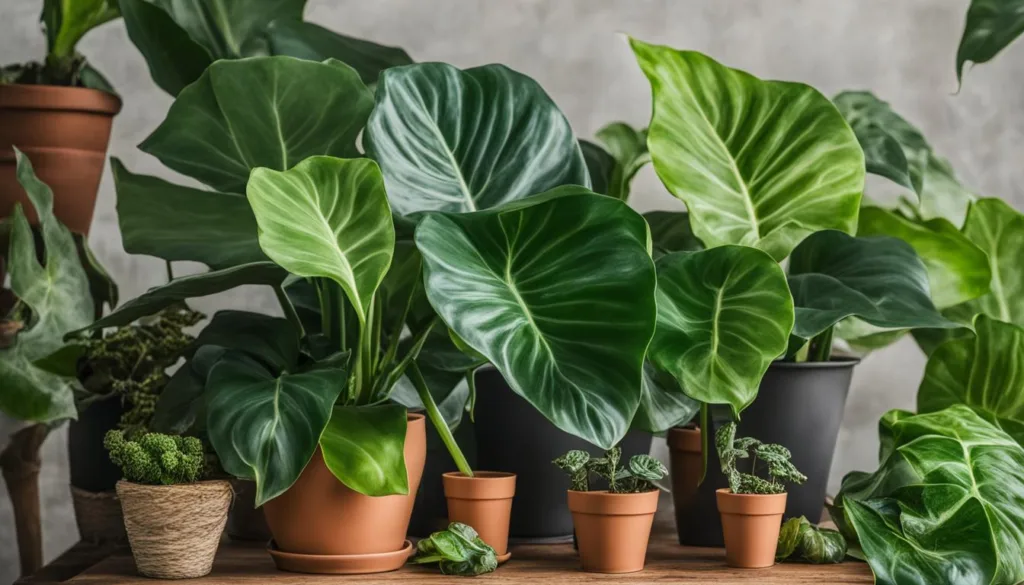
Proper fertilization is crucial for the healthy growth of your Alocasia Polly. By following a consistent fertilizer schedule, you can provide the essential nutrients that your plant needs to thrive. Here are some care tips to help you fertilize your Alocasia Polly effectively:
1. Choose the Right Fertilizer
When selecting a fertilizer for your Alocasia Polly, opt for a balanced, water-soluble houseplant fertilizer. Look for a formulation with an equal ratio of nitrogen (N), phosphorus (P), and potassium (K), such as 10-10-10 or 20-20-20. This balanced blend will promote overall growth and support the plant’s health.
2. Dilute the Fertilizer
To prevent overfertilization, dilute the fertilizer to half the recommended strength. Mix the fertilizer with water according to the package instructions, ensuring that it is adequately diluted before application. This will help avoid potential salt buildup in the soil, which can harm the plant’s roots.
3. Apply Fertilizer Monthly
During the growing season, from spring to summer, feed your Alocasia Polly once a month. Apply the diluted fertilizer to the soil, making sure to distribute it evenly around the base of the plant. This regular feeding will provide the necessary nutrients to support vigorous foliage growth.
4. Reduce Fertilization in Dormancy
During the plant’s dormancy period, which typically occurs in fall and winter, reduce the frequency of fertilization. Apply the diluted fertilizer once every two to three months. This decrease in fertilization will align with the plant’s reduced growth rate and prevent nutrient buildup in the soil.
By following these fertilizer tips and caring for your Alocasia Polly with love and attention, you can enjoy a vibrant and thriving tropical houseplant that adds beauty to your indoor space.
Table: Alocasia Polly Fertilizer Schedule
| Season | Fertilization Frequency |
|---|---|
| Spring to Summer (Growing Season) | Once a month |
| Fall to Winter (Dormancy Period) | Once every two to three months |
Alocasia Polly Soil Requirements and Care Tips
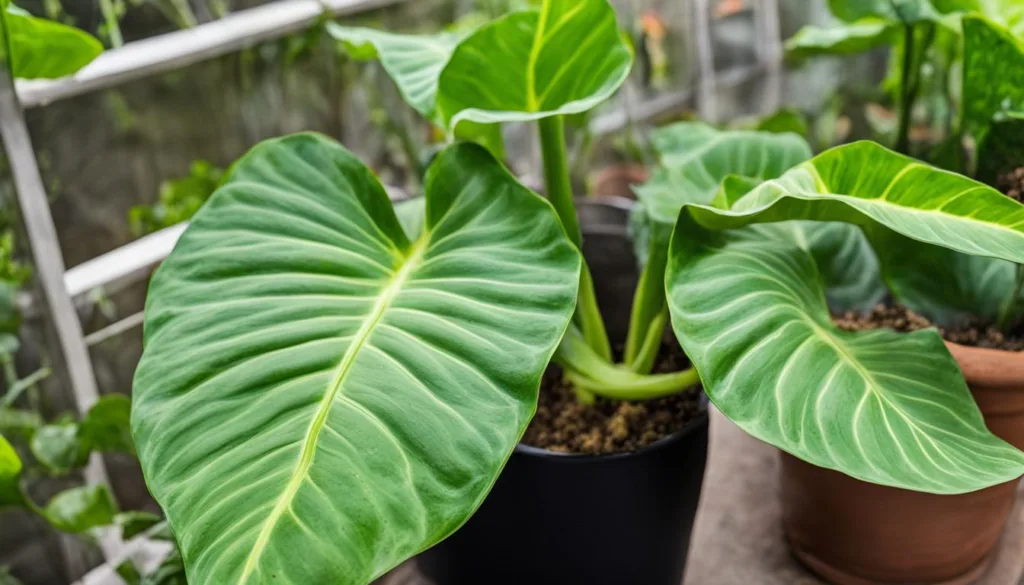
Proper soil is essential for the healthy growth of your Alocasia Polly. This tropical plant thrives in well-draining soil that retains some moisture. To create a suitable soil mix, combine equal parts peat moss, perlite, and potting soil.
The peat moss helps with moisture retention, while perlite ensures proper drainage, preventing the roots from becoming waterlogged. Potting soil provides essential nutrients for the plant’s growth.
It is recommended to use a high-quality, well-aerated potting mix specifically formulated for tropical plants. This type of soil will provide the right balance of moisture and air circulation, promoting healthy root development. Additionally, ensure that the pot has proper drainage holes to prevent water accumulation, which can lead to root rot.
Choosing the Right Pot
When selecting a pot for your Alocasia Polly, choose one that is only slightly larger than the current pot. A pot that is too large will retain excessive moisture, increasing the risk of overwatering.
Alocasia Polly plants prefer to be slightly root-bound, which helps promote healthy growth. If you notice that your plant has outgrown its current pot or the roots are becoming overcrowded, it’s time to repot. Increase the pot size gradually, allowing the plant to adjust to its new environment.
Repotting Guide
When repotting your Alocasia Polly, gently loosen the roots from the old soil, being careful not to damage them. Place the plant in the new pot, ensuring that the root ball is centered. Fill the remaining space with fresh potting mix, lightly pressing it down around the roots. Water the plant thoroughly after repotting to help settle the soil and remove any air pockets.
| Soil Requirement | Care Tips |
|---|---|
| Well-draining soil | Prevents waterlogging and root rot |
| Equal parts peat moss, perlite, and potting soil | Provides moisture retention, drainage, and essential nutrients |
| Avoid oversized pots | Prevents excessive moisture retention |
| Choose a slightly larger pot when repotting | Allows for gradual growth and adjustment |
By providing your Alocasia Polly with the right soil conditions, you will create an optimal environment for its growth and overall well-being. Remember to monitor the moisture levels in the soil and adjust your watering routine accordingly. With proper soil and care, your Alocasia Polly will flourish and become a stunning addition to your indoor garden.
Alocasia Polly Common Problems and Troubleshooting
While Alocasia Polly is a resilient and hardy plant, it may encounter a few common problems that can affect its overall health and appearance. By being aware of these issues and taking proactive measures, you can ensure that your Alocasia Polly remains vibrant and thriving. Here are some common problems you may encounter and tips for troubleshooting them:
1. Yellowing or Spotting Leaves:
If you notice yellowing or spotting on the leaves of your Alocasia Polly, it could be a sign of overwatering or inadequate drainage. Ensure that you are not overwatering your plant and that the soil is well-draining.
Allow the top inch of soil to dry out before watering again, and check that the pot has drainage holes. Additionally, avoid using water that contains high levels of minerals, as this can cause leaf discoloration.
2. Browning Edges:
Browning edges on the leaves can indicate low humidity levels or irregular watering practices. Alocasia Polly thrives in humid conditions, so consider using a humidifier or placing a tray of water near the plant to increase moisture in the air. Additionally, ensure that you are watering your plant consistently and keeping the soil evenly moist, but not waterlogged.
3. Leaf Fading and Dying in Fall/Winter:
Alocasia Polly goes through a period of dormancy in the fall and winter months, during which some leaf fading and dying is normal. During this time, reduce watering and fertilization, and provide your plant with slightly cooler temperatures. It is important to avoid excessive watering or feeding during this period, as it can lead to root rot.
By addressing these common problems and implementing the necessary care tips, you can keep your Alocasia Polly healthy and beautiful. Regular monitoring and proactive care are key to preventing and resolving these issues, ensuring that your plant thrives and continues to be a stunning addition to your indoor garden.
| Problem | Troubleshooting Tips |
|---|---|
| Yellowing or Spotting Leaves | – Ensure proper drainage and avoid overwatering – Let the top inch of soil dry out before watering again – Use water without high mineral content |
| Browning Edges | – Increase humidity levels around the plant – Consistently water the plant, keeping the soil evenly moist – Avoid waterlogging the soil |
| Leaf Fading and Dying in Fall/Winter | – Understand and respect the plant’s dormancy period – Reduce watering and fertilization during this time – Provide slightly cooler temperatures |
Propagation and Pruning Guide for Alocasia Polly
Are you looking to expand your collection of Alocasia Polly plants? Well, you’re in luck! Propagating Alocasia Polly is a straightforward process that can be done during the plant’s dormancy period.
To get started, simply move your plant to a warm location and reduce watering until it begins to grow again in the spring. Once new growth is visible, you can take cuttings from the existing plant.
To propagate Alocasia Polly, select a healthy stem with a few leaves attached. Using clean, sharp pruning shears or scissors, make a clean cut just below a node or bud. Place the cutting in a container of water, making sure the node is submerged.
Keep the container in a warm and well-lit area, changing the water every few days to prevent rot. After a few weeks, roots will start to develop, and once they are around an inch long, you can transfer the cutting to a pot filled with well-draining soil.
When it comes to pruning Alocasia Polly, the main goal is to remove dead, damaged, or yellowing leaves. Using the same clean tools, make clean cuts near the base of the leaf stem, being careful not to cut into the main stalk.
It’s important to avoid removing more than one-third of the plant’s foliage at a time, as this can put stress on the plant. Regular pruning can help maintain the plant’s overall health and appearance.
Remember, propagation and pruning should always be carried out with care and precision. By following these simple tips, you’ll be well on your way to expanding your Alocasia Polly collection and keeping your plants looking their best!
FAQ
Can Alocasia Polly tolerate direct sunlight?
No, Alocasia Polly prefers medium to bright, indirect sunlight. Direct sunlight can scorch its leaves.
How often should I water my Alocasia Polly?
Water your Alocasia Polly weekly, keeping its soil moist but not wet. In winter, allow the top 2 inches of soil to dry out between waterings.
How can I create humidity for my Alocasia Polly?
You can mist the plant frequently, place it close to other plants, or use a pebble tray partly filled with water to increase humidity.
What is the ideal temperature range for Alocasia Polly?
Alocasia Polly thrives in temperatures ranging from 18-25ºC (65-80ºF). Avoid abrupt temperature changes and cold drafts.
How often should I fertilize my Alocasia Polly?
Feed your Alocasia Polly with a general houseplant fertilizer monthly during the growing season (spring to summer). Reduce fertilization frequency to once every two to three months during dormancy.
What kind of soil does Alocasia Polly prefer?
Alocasia Polly prefers well-draining soil that retains some moisture. Use a high-quality, well-aerated potting mix designed for tropical plants.
What are some common problems with Alocasia Polly and how can I troubleshoot them?
Common problems include yellowing or spotting leaves, browning edges, and leaf fading and dying in the fall/winter. Adjust watering practices, provide proper light conditions, and understand the plant’s dormancy period to address these issues.
How can I propagate and prune my Alocasia Polly?
Alocasia Polly can be easily propagated in water during its dormancy period. Pruning should focus on removing dead, damaged, or yellowing leaves. Use clean, sharp pruning shears or scissors to make clean cuts near the base of the leaf stem.

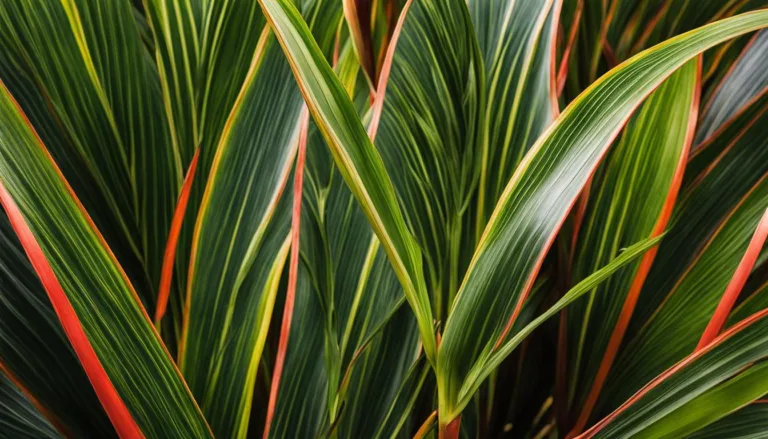
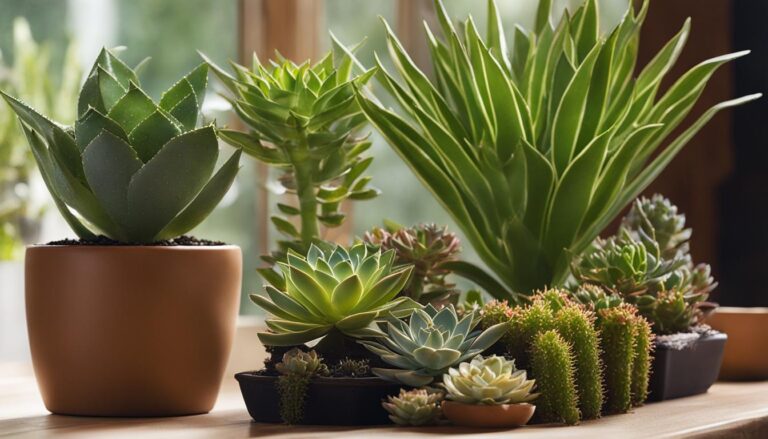
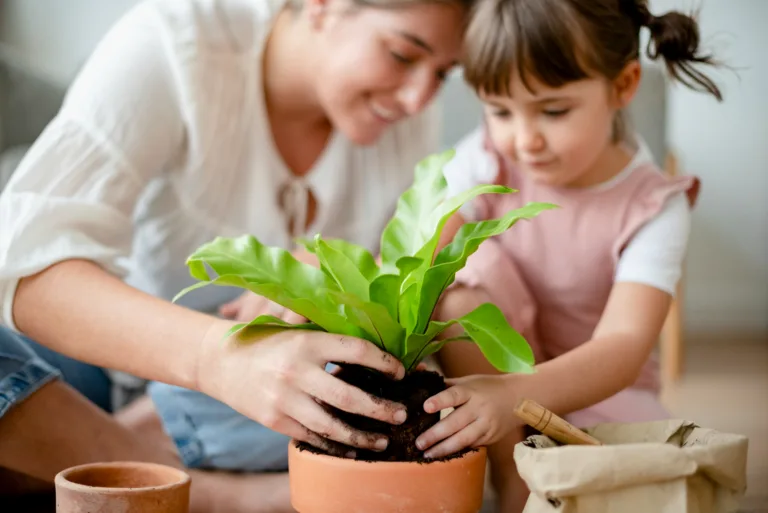
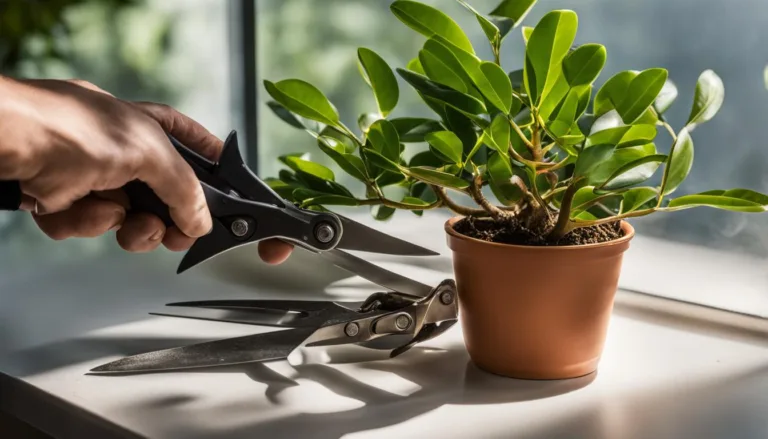

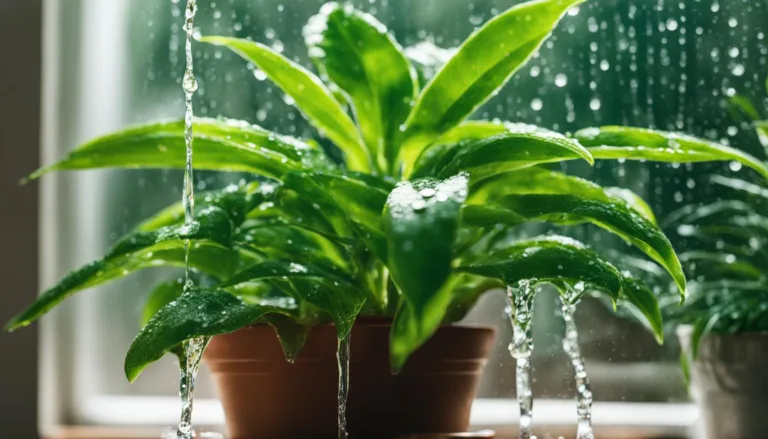
This asset is remarkable. The wonderful substance shows the designer’s enthusiasm. I’m astounded and envision more such fabulous material.